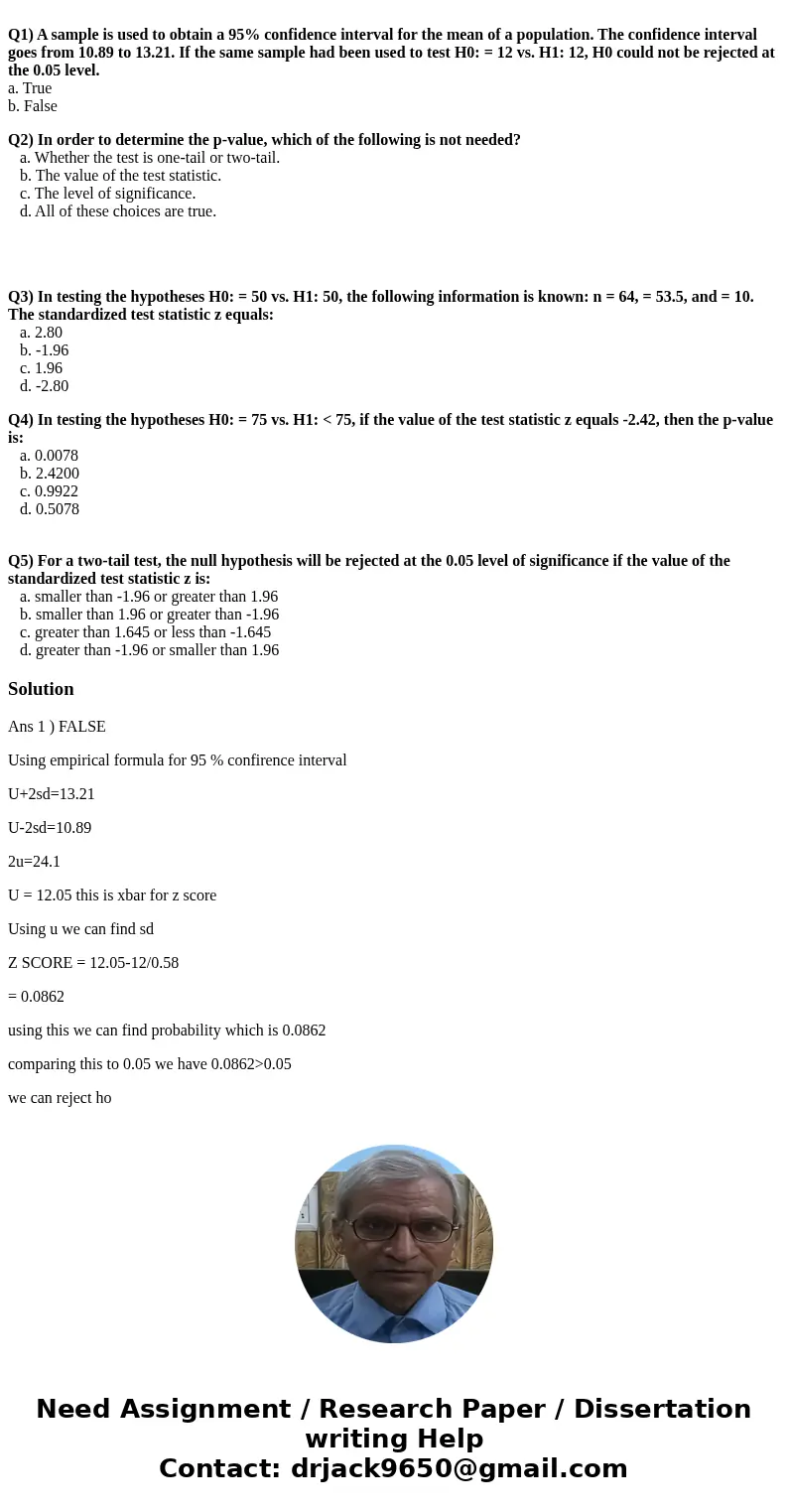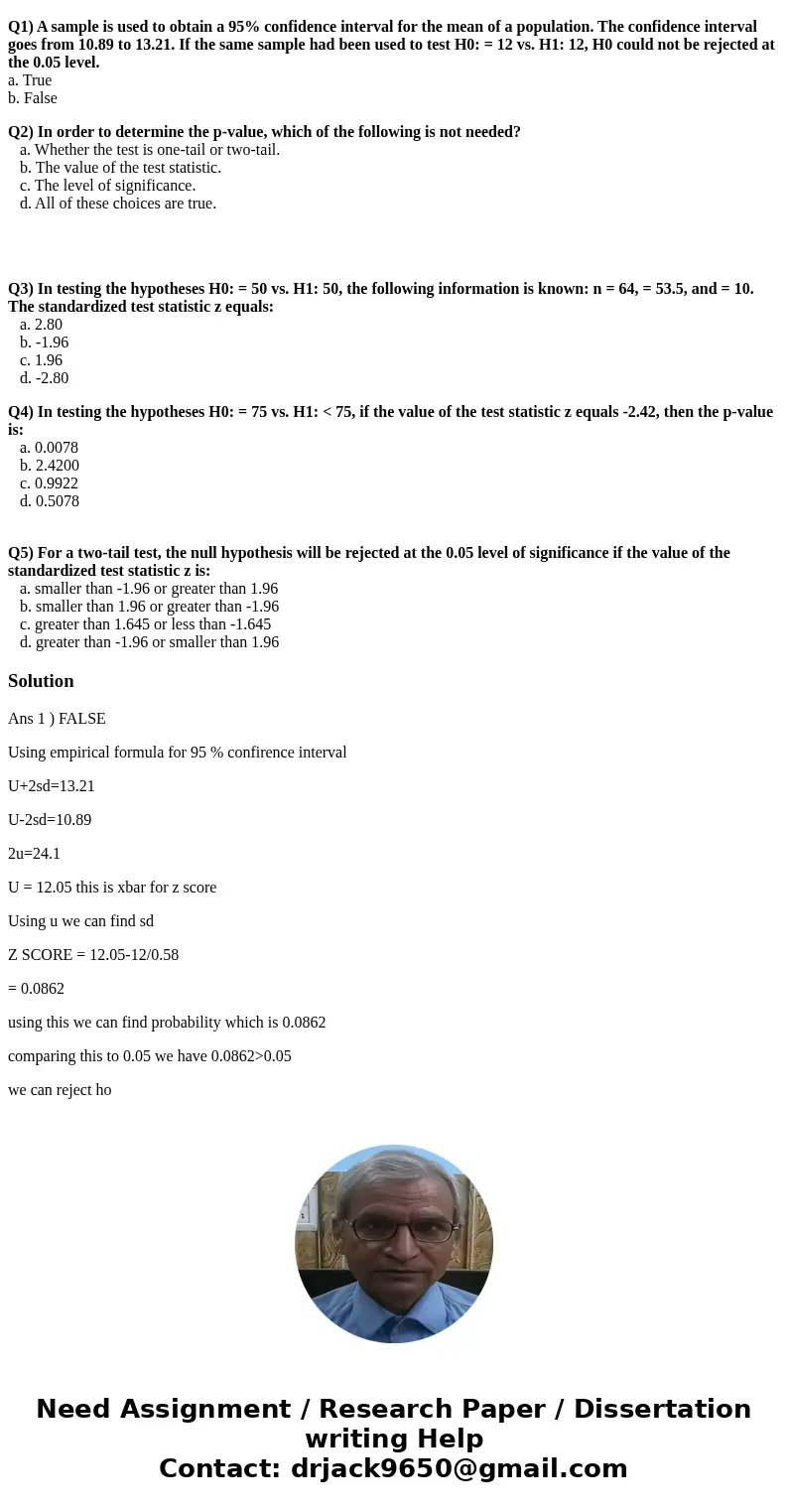Q1 A sample is used to obtain a 95 confidence interval for t
Q1) A sample is used to obtain a 95% confidence interval for the mean of a population. The confidence interval goes from 10.89 to 13.21. If the same sample had been used to test H0: = 12 vs. H1: 12, H0 could not be rejected at the 0.05 level.
a. True
b. False
Q2) In order to determine the p-value, which of the following is not needed?
a. Whether the test is one-tail or two-tail.
b. The value of the test statistic.
c. The level of significance.
d. All of these choices are true.
Q3) In testing the hypotheses H0: = 50 vs. H1: 50, the following information is known: n = 64, = 53.5, and = 10. The standardized test statistic z equals:
a. 2.80
b. -1.96
c. 1.96
d. -2.80
Q4) In testing the hypotheses H0: = 75 vs. H1: < 75, if the value of the test statistic z equals -2.42, then the p-value is:
a. 0.0078
b. 2.4200
c. 0.9922
d. 0.5078
Q5) For a two-tail test, the null hypothesis will be rejected at the 0.05 level of significance if the value of the standardized test statistic z is:
a. smaller than -1.96 or greater than 1.96
b. smaller than 1.96 or greater than -1.96
c. greater than 1.645 or less than -1.645
d. greater than -1.96 or smaller than 1.96
Solution
Ans 1 ) FALSE
Using empirical formula for 95 % confirence interval
U+2sd=13.21
U-2sd=10.89
2u=24.1
U = 12.05 this is xbar for z score
Using u we can find sd
Z SCORE = 12.05-12/0.58
= 0.0862
using this we can find probability which is 0.0862
comparing this to 0.05 we have 0.0862>0.05
we can reject ho


 Homework Sourse
Homework Sourse